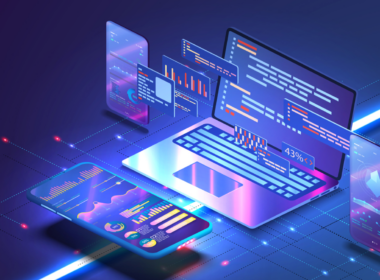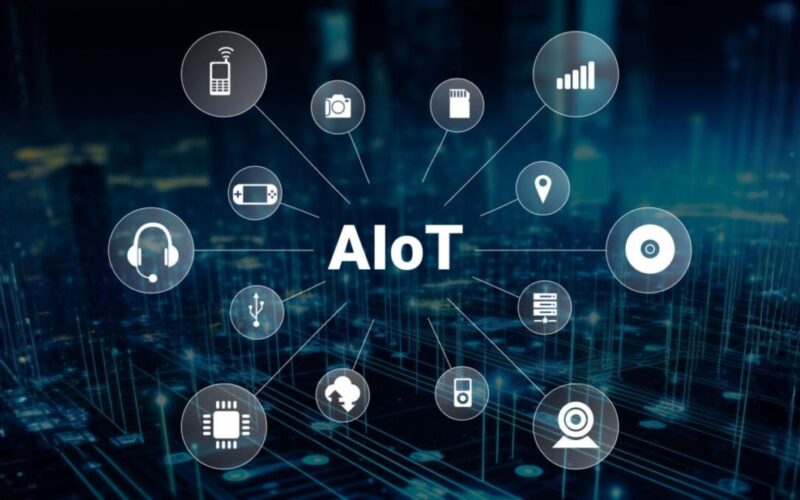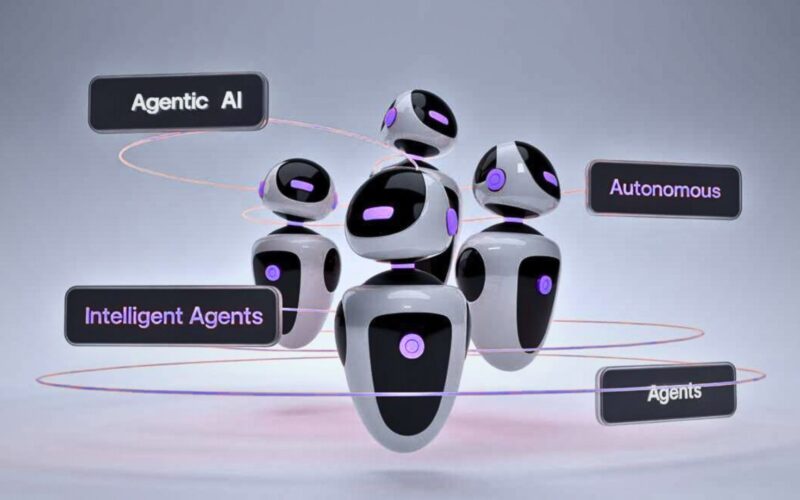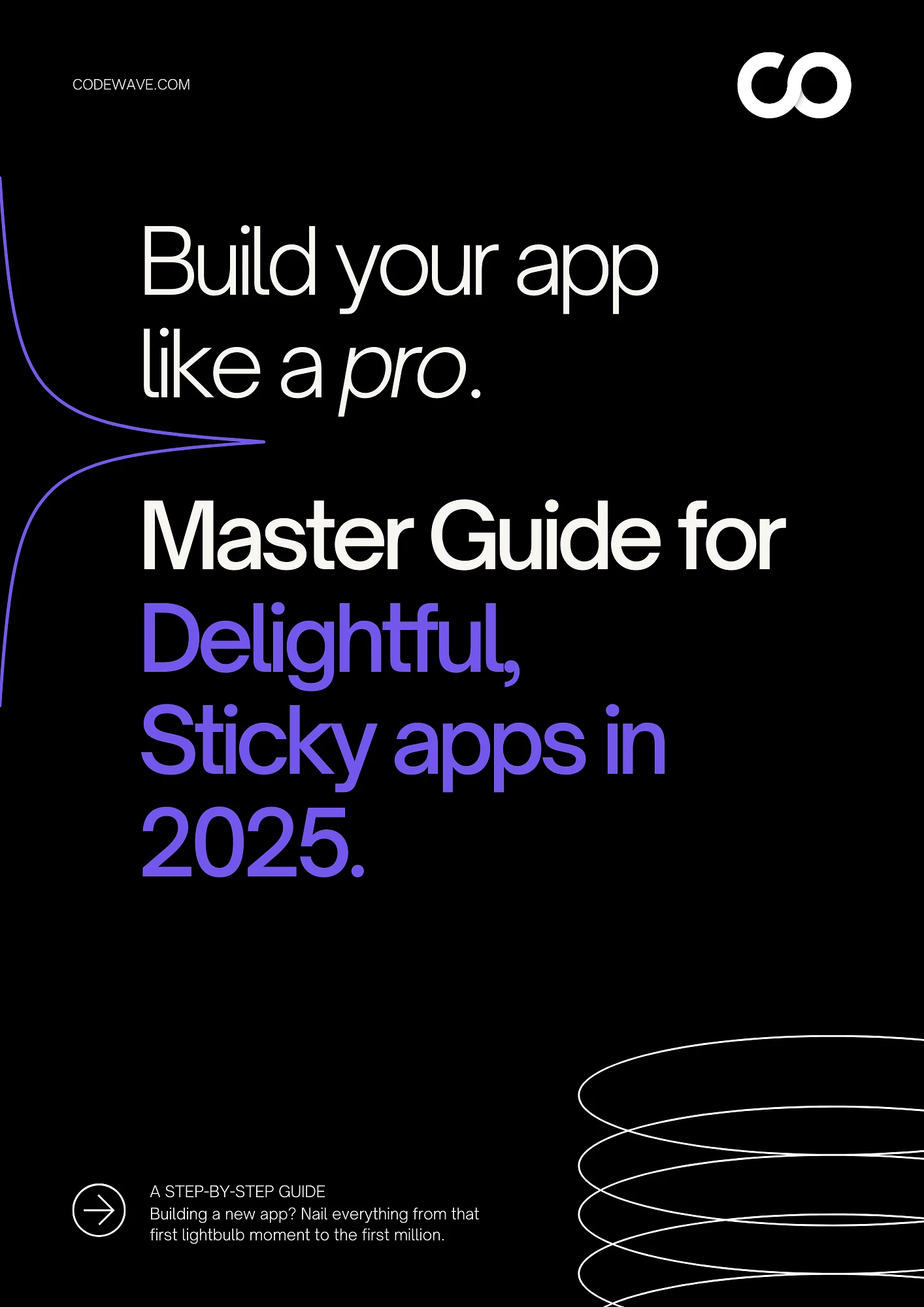You already work with connected systems that track, measure, and report everything. The question now is: can those systems make reliable decisions on their own?
When AI works alongside IoT, it’s not just about collecting information anymore; it’s about turning that information into clear, useful actions that save time, reduce errors, and keep operations running smoothly.
This isn’t theory. According to an IBM Review, about72% of large organizations are already seeing productive returns from their AI initiatives; proof that real intelligence starts showing value when it’s built into the systems you use every day.
In this blog, you’ll get a straightforward look at how AI and IoT work together, the technologies that make it possible, and how teams are using them to move from data to action.
Key Takeaways:
- AI and IoT Together Drive Real Intelligence: AI enhances IoT’s sensing capabilities by adding reasoning and prediction. This transforms connected data into real-time, autonomous decisions.
- Understanding the Foundation Matters: Knowing how technologies like Edge AI, 5G, federated learning, and digital twins work helps teams build reliable and scalable systems.
- AIoT Is Already Delivering Results: From predictive maintenance in rail to smart energy management and workplace safety, global enterprises are proving its value.
- Success Depends on Strategy, Not Just Tech: 88% of AI pilots fail due to poor data, unclear goals, or lack of governance; issues that can be avoided with the right roadmap.
- Codewave Helps Turn Vision into Reality: With 400+ projects delivered, Codewave combines AI, IoT, and design-led engineering to create intelligent systems that scale confidently and deliver measurable business outcomes.
Understanding the Difference Between AI and IoT
When you look at AI and IoT from the outside, they sound inseparable; both talk about data, automation, and intelligence. But under the hood, they serve very different purposes in an organization’s digital architecture.
Knowing how they differ isn’t just semantics; it defines how you build your systems, allocate budgets, and measure ROI.
- IoT gives you visibility: It connects physical assets, collects signals, and builds a real-time understanding of operations.
- AI gives you judgment: It interprets those signals, learns from patterns, and makes predictions or decisions that drive action.
Think of IoT as the nervous system and AI as the brain. One senses, the other understands.
Here’s how they differ when you break them down in context:
| Dimension | IoT | AI |
|---|---|---|
| Core Purpose | Connects and monitors devices, collecting continuous data. | Analyzes and interprets data to generate insights or take action. |
| Data Role | Produces real-time data streams from physical systems. | Consumes data to train, predict, and optimize. |
| Output | Status updates, alerts, performance metrics. | Decisions, forecasts, adaptive responses. |
| Infrastructure | Sensors, gateways, connectivity, and cloud dashboards. | Models, algorithms, compute, and inference engines. |
| Value Delivery | Operational visibility and responsiveness. | Continuous improvement and automation. |
When AI and IoT converge, they create AIoT, a system where connected devices not only collect data but also understand and act on it in real-time.
What Is AIoT? The Power of Combining AI and IoT
AIoT, the Artificial Intelligence of Things, brings together IoT’s connectivity and AI’s intelligence to create systems that can sense, think, and act autonomously. The IoT collects data from connected devices, and AI analyzes it to drive predictions, automation, and real-time decision-making.
For modern enterprises, AIoT bridges the gap between information and action. It enables faster operations, proactive maintenance, and customer experiences that continuously adapt.
Key Functions of AIoT:
- Data to Decisions: Converts IoT data streams into actionable insights.
- Predictive Operations: Detects anomalies and schedules maintenance before failure.
- Automation at Scale: Executes intelligent actions without manual input.
- Personalization: Adjusts experiences or workflows in real time.
- Continuous Learning: Improves accuracy and efficiency with every interaction.
If you’re ready to move from insight to intelligence, Codewave’s AI and ML development services can help you do just that. From predictive modeling to conversational AI and self-learning systems, our solutions are built to think, adapt, and deliver measurable business impact.
Suggested Read: Emerging IoT Trends and Technologies to Watch in 2025
To understand how AIoT truly works, it is helpful to examine the core technologies driving this intelligent convergence.
9 Key Technologies Driving AIoT Innovation
When teams overlook the technologies behind AIoT, systems often end up slow, unreliable, or stuck at the pilot stage. Understanding how each layer works, from data handling to on-device learning, enables you to build solutions that are fast, secure, and designed to scale.
Here are nine technologies that make that possible.
1. Edge AI and TinyML
Edge AI refers to running artificial intelligence models directly on devices such as sensors, gateways, or controllers. TinyML is a version of machine learning designed for very small, low-power devices.
How it works: Instead of sending all data to the cloud, devices process information locally. For example, a sensor can detect an abnormal vibration and trigger an alert immediately. This lowers latency, reduces bandwidth costs, and helps systems operate even without constant internet access.
2. Federated Learning
A distributed learning method that allows many devices to train a shared model without moving raw data off the device.
How it works: Each device learns from its own data and only shares model updates with a central server. The system then combines those updates to improve the overall model. This keeps sensitive data private while still improving accuracy across the network.
3. Computer Vision on Devices
A way for cameras and visual sensors to analyze images and video directly at the source instead of relying on remote servers.
How it works: Lightweight vision models are loaded onto edge devices. These models can detect defects on an assembly line, count people in a space, or monitor safety conditions. It reduces delay and makes visual analysis more reliable in areas where real-time response matters.
4. 5G and Low-Power Networks
The connectivity foundation that keeps IoT systems running. Low-power wide-area networks (LPWAN) handle large fleets of sensors, while 5G supports data-heavy or time-critical tasks.
How it works: LPWAN technologies such as LoRaWAN and NB-IoT allow battery-powered sensors to send small packets of data over long distances. 5G, with its high bandwidth and low latency, supports applications like automated vehicles and industrial robotics where instant communication is vital.
5. Model Compression and Lightweight Frameworks
The tools that make AI models small and efficient enough to run on IoT devices.
How it works: Frameworks like TensorFlow Lite, ONNX Runtime, and PyTorch Mobile reduce model size through quantization and pruning. This keeps computing and power use low while maintaining accuracy, making it practical to deploy AI on thousands of devices.
6. Hardware Accelerators
Special chips built to process AI tasks faster and more efficiently than general-purpose CPUs.
How it works: Devices equipped with NPUs (Neural Processing Units) or VPUs (Vision Processing Units) can perform inference locally. This means faster detection, lower energy use, and less reliance on the cloud for analysis.
7. MLOps and Model Tracking
The process of managing AI models once they are deployed in production.
How it works: MLOps tools help track model versions, measure performance, detect when predictions become inaccurate, and retrain models when needed. This ensures the intelligence within AIoT systems remains dependable over time.
8. Digital Twins and Simulation
A digital version of a physical system or process used to test and refine AI behavior before deployment.
How it works: Engineers can feed data from sensors into a simulated version of the system to predict how changes will perform in reality. It helps identify errors and fine-tune decision logic without interrupting live operations.
9. Device and Data Security
The set of security measures that protects connected systems from breaches and tampering.
How it works: Techniques such as secure boot, encrypted communication, and hardware-based verification confirm that devices are genuine and that data stays protected during transmission. Security is built into every level of AIoT, from sensors to servers.
Also Read: AI Trends in the Future of Mobile App Development
Knowing the technologies is one part of the picture; seeing how they’re applied brings it to life.
Real-World AIoT Applications Across Industries
Across sectors, some companies are already treating AIoT as part of daily operations; not a pilot, but a practical tool that delivers results. Here’s a look at three such examples where connected intelligence has changed how work gets done.
1. KONUX – Rail Infrastructure Predictive Maintenance
KONUX combines IIoT sensors with AI analytics to monitor key railway components (switches, frogs, trackbed).
Their “KONUX Switch” solution reports: 90 % of service-affecting defects detected in advance, downtime reduced by 45 %, operational expenditure cut by 30%.
Why it matters: For asset-intensive operations, this means fewer service interruptions, smarter maintenance scheduling, and longer component life; directly impacting cost, risk, and availability.
2. Verdigris Technologies – Smart Building Energy & Operations
Verdigris deploys high-frequency IoT hardware across building electrical panels and uses AI to forecast, monitor, and automate energy use.
For example, in a commercial building case, sensors captured usage thousands of times per second, AI added weather/occupancy data, and adjusted the HVAC systems accordingly.
Why it matters: For real estate, facilities, CX, and operations leaders, this means converting building systems from cost centers into responsive, measurable drivers of performance, and aligning with sustainability and operational efficiency goals.
3. Trio Mobil – Industrial Workplace Safety & Fleet Efficiency
Trio Mobil uses AI-enhanced IoT systems (video analytics, UWB location sensors, telematics) to detect forklift/pedestrian collisions, optimize vehicle and worker movement. They also use it to monitor safety in logistics/manufacturing environments. Clients include global brands like Coca-Cola, Nestlé, and Ford.
Why it matters: For operational and safety leaders, this demonstrates how AIoT can transition from reactive safety checks to proactive prevention, reduce incident risk, and optimize workforce/asset utilization.
If you’re looking to bring the same intelligence and efficiency to your own operations, Codewave’s IoT and Edge AI development services can help you get there. From secure, connected devices to real-time analytics and automation, they build systems that think, adapt, and perform at scale.
Seeing how others have applied AIoT shows what’s possible, but turning those results into something that works for you requires a clear plan.
Steps to Implement AIoT in Your Organization
Most AI projects never make it past testing, 88% fail to reach production. The issue isn’t potential, it’s execution. To turn pilots into performance, you need a focused roadmap that connects business goals, data, and deployment.
The steps below outline the process.
Step 1: Define a Clear Use Case and Success Metrics
Start with a business problem that can be measured, like downtime, energy use, or predictive maintenance. Findings show that AIoT delivers the strongest returns when applied to specific, high-impact operations rather than broad automation goals. Set KPIs tied to savings, efficiency, or uptime from day one.
Step 2: Audit and Connect Your Data Sources
Before any AI model can learn, your systems need complete, accurate, and accessible data. Forbes reports that AI initiatives without full enterprise data access fail to deliver meaningful ROI. Map where your data lives (sensors, ERP, CRM, field devices) and remove silos. This creates the foundation for trustworthy AI-driven insight.
Step 3: Decide Where Intelligence Should Live
Not every use case needs cloud computing. For real-time actions, like detecting a machine fault or managing warehouse robots, Edge AI ensures immediate response and lower bandwidth costs. Use the cloud for analytics, long-term trends, and centralized monitoring. Balancing both is key to scalable AIoT.
Step 4: Build and Pilot a Scalable Model Pipeline
Start small but think scale. Create a minimal pipeline that collects data, runs the model, and reports results against your KPIs. Run the pilot in live conditions to see how your models handle noise and latency.
Step 5: Establish MLOps and Security from the Start
Many organizations lose ROI when models degrade or security gaps appear. Implement MLOps tools to monitor drift, retrain models, and track performance over time. Pair that with device security, encrypted telemetry, authenticated devices, and secure updates. This is so your system remains dependable in production.
Step 6: Scale with the Right Expertise and Governance
Scaling AIoT isn’t just technical; it’s organizational. You’ll need teams that understand both AI workflows and connected system design. A trusted technology partner with end-to-end experience can accelerate this step, helping you align design thinking, data engineering, and model lifecycle management for repeatable success.
With the groundwork set, the next step is scaling intelligently, something Codewave’s AIoT expertise is built to support.
Building Smarter, Scalable Systems with Codewave’s AIoT Expertise
You want a partner who can move beyond proof-of-concept and deliver systems that stand up in production. Codewave’s track record instills confidence: the company has successfully completed over 400 digital transformation projects across more than 15 industries.
Their design-led and full-stack engineering approach means you don’t just get devices or models; you get a connected system built for enterprise scale.
Here’s why Codewave stands out in the AIoT space:
- They combine IoT and device engineering, AI/ML development, and enterprise system integration, ensuring sensors, models, and systems work end-to-end.
- Their services include data strategy, analytics, and predictive intelligence; a critical piece in turning connected-device output into meaningful decisions.
- They emphasize scalable architecture in their product development services, showcasing outcomes such as “50% faster development cycles” and “30% improved user retention.”
Key Services for AI and IoT Challenges
To help teams transition from connected devices to connected intelligence, Codewave offers a suite of targeted services that integrate AI and IoT; each addressing a crucial aspect of the journey from data to decision.
- AI & ML Development: Build custom models, develop predictive systems, and integrate them with enterprise back-ends.
- IoT (Device & System Integration): Connect sensors, gateways, and enterprise platforms to stream real-time data and enable local decision points.
- Data Strategy, Analytics & Predictive Intelligence: Define how device data should be structured, monitored, and used to power decision logic and ongoing learning.
- Digital Transformation & Process Automation: Move from manual workflows to intelligent automation that uses device signals and AI insight to trigger action.
Also Read: Understanding the AI Development Process
Even with strong systems and strategy, bringing AI and IoT together can surface a few unexpected hurdles.
Common Challenges and How to Overcome Them
Before scaling anything, it helps to know the usual roadblocks upfront. Here’s a quick look at what trips teams up most often and what actually keeps AIoT on track.
| Challenge | Why It Matters | How to Overcome It |
|---|---|---|
| Data Quality | Unreliable data weakens AI accuracy. | Automate cleaning and use real-time data checks. |
| Security Risks | Devices and data are exposed to breaches. | Encrypt data, verify devices, and update regularly. |
| Scalability | Pilots fail under enterprise load. | Use modular design and test for performance early. |
| Integration Issues | Devices and platforms don’t sync smoothly. | Adopt standard APIs and unified protocols. |
| Unclear KPIs | Hard to prove business value. | Set measurable goals tied to outcomes. |
Conclusion
AIoT is no longer an emerging concept; it has become a core part of how enterprises operate, compete, and scale. The real differentiator today isn’t access to data or devices, but how intelligently that data is used to make decisions faster and with greater accuracy.
The most successful implementations start small but are built with scale in mind, connecting the right signals, systems, and intelligence to drive measurable results. It takes technical depth, strategic clarity, and thoughtful design to bring all of it together; qualities that define Codewave’s approach.
With deep expertise in AI, IoT, and enterprise architecture, Codewave helps businesses move beyond pilots to production-ready intelligence that delivers real impact. From predictive systems to connected automation, every solution is designed for adaptability and long-term value.
If you’re ready to turn your connected systems into intelligent ones, Codewave can help you get there. Reach out today to start building smarter, scalable solutions for the future.
FAQs
1. How does AI actually improve IoT systems?
AI helps IoT systems interpret the massive amount of data generated by devices. Instead of just monitoring metrics, AI enables predictive maintenance, anomaly detection, and automated decision-making, turning raw data into proactive, intelligent actions.
2. What are the main benefits of combining AI and IoT for enterprises?
AIoT delivers measurable results such as reduced downtime, optimized resource use, improved safety, and smarter automation. For enterprises, it means better forecasting, lower costs, and faster operational decisions.
3. How can small or mid-sized companies start implementing AIoT?
Start with a clear use case that ties directly to business goals — like energy optimization or equipment monitoring. Use existing IoT data, introduce AI models gradually, and focus on pilot projects that can scale later.
4. What challenges should organizations expect during AIoT implementation?
Common issues include inconsistent data, integration difficulties, and unclear ROI metrics. These can be avoided with early data audits, clear success KPIs, and strong MLOps and security frameworks.
5. Why choose Codewave for AIoT projects?
Codewave offers end-to-end expertise across AI, IoT, and enterprise integration. Their design-led approach ensures systems are not only intelligent but also scalable and practical, helping businesses turn connected data into sustained value.
Codewave is a UX first design thinking & digital transformation services company, designing & engineering innovative mobile apps, cloud, & edge solutions.







